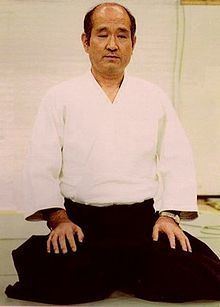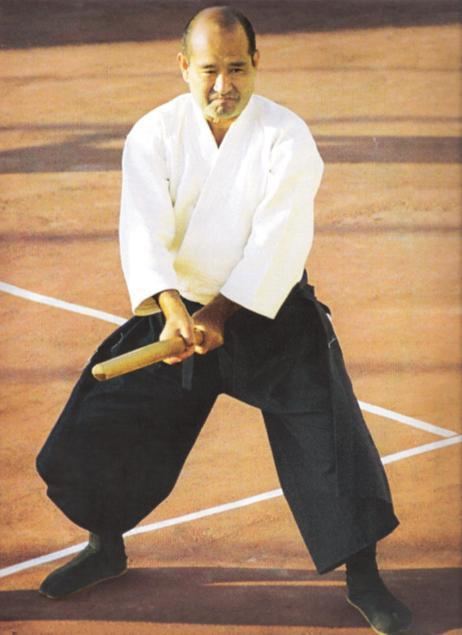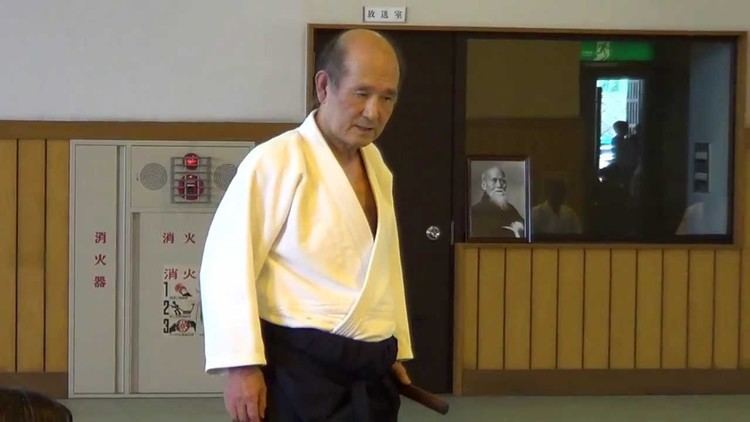Residence Japan Nationality Japanese | Occupation Aikido teacher Name Masatomi Ikeda | |
 | ||
Born April 8, 1940 (age 85) ( 1940-04-08 ) Japan Title Shihan, 7th dan Aikikai | ||
Sensei masatomi ikeda 7 dan aikikai hombu
Masatomi Ikeda (池田 昌富, いけだ まさとみ, Ikeda Masatomi) (born April 8, 1940) is a Japanese aikido teacher who holds the rank of 7th dan Aikikai.
Contents
- Sensei masatomi ikeda 7 dan aikikai hombu
- Aikido Shihan Masatomi Ikeda Sensei Summer Tokyo 2013
- Biography
- Teachers
- Colleagues
- Students
- References

Aikido Shihan Masatomi Ikeda Sensei Summer Tokyo 2013
Biography

Masatomi Ikeda was born in Tokyo, Japan. He was already interested in budō and sports in general when he was young which resulted in achieving a 5th dan in sumo and 4th dan in judo. Until he started with Aikido in 1958, judo played an essential role in his life. In 1960 he enlisted into the dojo of Hiroshi Tada (9th dan Aikikai). He started intensively practising budō, and especially aikido. He trained himself in judo in the Kodokan Institute and at the dojo of Dokkyo High School. For sumo he trained in the stable Kise’s Sumo.

In 1964, he graduated at the Nippon Physical Education University. In October 1965, he went on his first journey to Italy with the aim of promoting Aikido which he had been teaching for approximately five years. He also obtained a university degree in gymnastics and hygiene; he would have had the possibility of teaching the gymnastics as a pedagogue, but he choose the way of the budōka and spent his time as an aikido professor, primarily in Naples.

In 1971, he returned to Japan with the aim of relearning the aikido from the basics. Besides aikido, he worked as gymnastics professor at the Dokkyo High School, where he had been a pupil before. Seven years passed like that instead of one to two years as he had envisaged. He collected some experience in teaching and some knowledge in Asian medicine like Seitai or seibukenkoho (method of cure according to the manner of seibu). He had also the possibility to learn the hojo kata (in the Kobudo Chokoshinei-ryu).
In 1977, he went on a journey in Europe on the request of the Swiss Cultural Association for Aikido (ACSA). He arrived in Switzerland in October of that year. When he stayed in Italy, he was also teaching judo, but from his arrival in Switzerland on, he completely dedicated his life to aikido. He was a delegated teacher by the Aikikai Foundation in Tokyo and his occupation was promoting Aikido. He served the ACSA for more than 25 years.
In 1986, the Aikido Ikeda-Dojo Zurich opened. During the following years, as a technical director of the ACSA, he visited without a break the various ACSA dojos all over Switzerland at a rate of two or three dojos per week! He did this in addition to the weekly half-dozen trainings which he directed in his dojo in Zurich. In parallel, he led national and international training seminars to maintain the friendship with and to practice with aikidoka nearby countries. Examples are the yearly ACSA winter stage in Zurich, Switzerland, which he led on many occasions together with Katsuaki Asai of the German Aikikai and Hideki Hosokawa of the Italian Aikikai, the yearly summer stage in Saignelégier, Switzerland, with his teacher Hiroshi Tada shihan of the Italian Aikikai and the yearly late summer or early autumn stage in Praiano, Italy, with Pasquale Aiello which were all also good friends of his.
In 1989, he received the 7th dan in Aikikai aikido. Thereafter, he was also occupied with the Aikikai in the Czech Republic since 1995, with the Slovak Aikido Association since 1996 and the Yugoslav Aikido Federation in Serbia since 1997. In 1998 he became also the technical director for the Turkish Aikido Association, and in 1996 he became technical adviser of the International Aikido Federation together with Hiroshi Isoyama (9th dan Aikikai). In parallel, he regularly taught seminars in countries like Croatia, Hungary, Russia and Poland. Also new connection with Netherlands was evolving however he did not get around to visit it.
During the height of his aikido career was the 30 year anniversary of the ACSA which was celebrated with a major international seminar in Basel from the June 5 to 7, 1999. On this gigantic event, shihan from many European countries conducted trainings and demonstrations.
In spring 2003, Ikeda had to abruptly stop all his activities as aikidoka due to a stroke. He has returned to Japan.
Teachers
The following persons have been his most influential teachers in alphabetical order:
Colleagues
The following people have been his close colleagues during his aikido career:
Note that this list does not specify who are his senpai and kōhai.
Students
These are the most notable of his students in alphabetical order:
